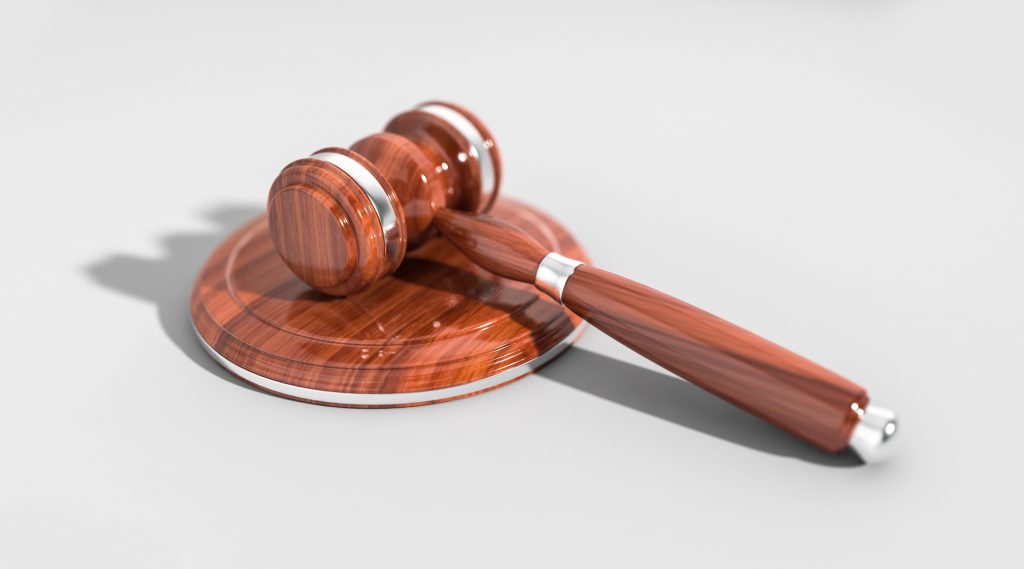 You lose your case. However, your lawyer tells you not to despair. She tells you that you can appeal the trial court’s judgment at the appellate court. However, it is not always that simple. Appellate courts, like trial courts, do not just accept every single case that comes their way. They must first have jurisdiction over a case, which simply means that they must meet certain requirements to hear the case. Without jurisdiction, an appellate court will be unable to take your case even if your claim may be legitimate.
You lose your case. However, your lawyer tells you not to despair. She tells you that you can appeal the trial court’s judgment at the appellate court. However, it is not always that simple. Appellate courts, like trial courts, do not just accept every single case that comes their way. They must first have jurisdiction over a case, which simply means that they must meet certain requirements to hear the case. Without jurisdiction, an appellate court will be unable to take your case even if your claim may be legitimate.
A multi-vehicle accident occurred on a highway in Jefferson Parish on December 25, 2014. The accident began when the vehicle driven by Max Beagle struck the vehicle driven by Elridge Thompson, Jr. Shadid Chaudry, who witnessed the collision between Beagle and Thompson, stopped his vehicle nearby to render assistance. Carrie Thiele was in the passenger seat of Chaudry’s vehicle. However, upon exiting the vehicle, Thiele was struck by a motorcycle driven by David Casse, who had swerved to avoid Chaudry’s vehicle. Upon hitting Thiele, Casse was thrown off his motorcycle while his motorcycle continued to move towards Thompson’s vehicle, eventually crashing into it.
Thompson filed a lawsuit against both Beagle and Casse and their respective insurance companies. Casse in turn filed a lawsuit against Thiele. In Casse’s lawsuit, he claimed that his collision with Thiele caused him severe injuries. Thiele filed a motion, stating that Casse’s lawsuit was barred because Casse’s lawsuit was filed more than a year after the accident. The Trial Court, without giving any written opinion, agreed with Thiele and dismissed Casse’s lawsuit.
 Louisiana Personal Injury Lawyer Blog
Louisiana Personal Injury Lawyer Blog


 Trials can be extremely expensive. One of the most expensive parts of a trial can be the costs associated with taking depositions. Therefore, it is in a party’s best interest to recuperate those costs in the aftermath of a successful outcome. In fact, it is the general rule that included in the damages of a successful party are the costs associated with depositions. However, a trial court may sometimes erroneously or negligently include such costs in a party’s damages.
Trials can be extremely expensive. One of the most expensive parts of a trial can be the costs associated with taking depositions. Therefore, it is in a party’s best interest to recuperate those costs in the aftermath of a successful outcome. In fact, it is the general rule that included in the damages of a successful party are the costs associated with depositions. However, a trial court may sometimes erroneously or negligently include such costs in a party’s damages.  When a lawsuit is filed for an injury, most people assume that the claim will be sorted out in court in a timely manner. Sometimes, however, a case can get significantly delayed by years, even before a trial has occurred. In these instances, it is also possible that the case becomes “abandoned” if neither side takes any action towards furthering the course of the lawsuit. For one West Feliciana woman, the defense tried to do just that and claimed case abandonment.
When a lawsuit is filed for an injury, most people assume that the claim will be sorted out in court in a timely manner. Sometimes, however, a case can get significantly delayed by years, even before a trial has occurred. In these instances, it is also possible that the case becomes “abandoned” if neither side takes any action towards furthering the course of the lawsuit. For one West Feliciana woman, the defense tried to do just that and claimed case abandonment. Businesses face many liability risks or risks of being sued. These include injuries to their employees on the job. Workers’ compensation is designed to address such injuries. In Louisiana, businesses in specific industries may agree to pool together with one another in order to “self-insure” these claims. This means that the businesses pay the claims from a specific fund rather than handle them through outside insurance companies. The concept of indemnity is important in these sorts of arrangements. Indemnity involves the paying back of money or the defense in court of one party by the other. Of course, money is not unlimited, and organizations providing may exclude certain coverage in particular situations. The business affected may not agree with this. The Fourth Circuit Court of Appeal recently considered such a dispute.
Businesses face many liability risks or risks of being sued. These include injuries to their employees on the job. Workers’ compensation is designed to address such injuries. In Louisiana, businesses in specific industries may agree to pool together with one another in order to “self-insure” these claims. This means that the businesses pay the claims from a specific fund rather than handle them through outside insurance companies. The concept of indemnity is important in these sorts of arrangements. Indemnity involves the paying back of money or the defense in court of one party by the other. Of course, money is not unlimited, and organizations providing may exclude certain coverage in particular situations. The business affected may not agree with this. The Fourth Circuit Court of Appeal recently considered such a dispute.  Benjamin Franklin had good reason to make the statement, “neither a borrower nor a lender be.” The potential for risk on either side of the transaction is significant. Be it the likelihood of not getting paid, or the possibility that you will not be able to repay the debt, many find that it is better to avoid the perils of money lending altogether. But that is just not practical. The way big plans are realized is often with money we do not yet have. And loaning money at interest is usually a great short-term investment, if you have the cash to spare. How do we assure our debt agreements will hold up in court?
Benjamin Franklin had good reason to make the statement, “neither a borrower nor a lender be.” The potential for risk on either side of the transaction is significant. Be it the likelihood of not getting paid, or the possibility that you will not be able to repay the debt, many find that it is better to avoid the perils of money lending altogether. But that is just not practical. The way big plans are realized is often with money we do not yet have. And loaning money at interest is usually a great short-term investment, if you have the cash to spare. How do we assure our debt agreements will hold up in court? When a party to a lawsuit waits too long to respond to a lawsuit or flat out declines to respond, courts have the ability to resolve the case with a default judgment. This default judgment resolves the case and the non-responding party must live with the court’s decision. While not ideal, it is a needed mechanism for times when a party does not comply with the rules. With the help of an excellent attorney an injured driver won his lawsuit when a Leesville vehicle repair shop failed to properly respond to his lawsuit.
When a party to a lawsuit waits too long to respond to a lawsuit or flat out declines to respond, courts have the ability to resolve the case with a default judgment. This default judgment resolves the case and the non-responding party must live with the court’s decision. While not ideal, it is a needed mechanism for times when a party does not comply with the rules. With the help of an excellent attorney an injured driver won his lawsuit when a Leesville vehicle repair shop failed to properly respond to his lawsuit. After a hard fought jury trial, an appeal can be expected. But, what cannot be anticipated is a transcribing error by the court that renders the judgment as invalid and makes any appeal impossible. Excellent attorneys can catch errors by other parties and avoid multiple extra steps before a lawsuit can be resolved. That was the case here as mismatching damage award classification labels extended a lawsuit well beyond its anticipated end.
After a hard fought jury trial, an appeal can be expected. But, what cannot be anticipated is a transcribing error by the court that renders the judgment as invalid and makes any appeal impossible. Excellent attorneys can catch errors by other parties and avoid multiple extra steps before a lawsuit can be resolved. That was the case here as mismatching damage award classification labels extended a lawsuit well beyond its anticipated end. If you and the opposing party in your lawsuit reach a settlement agreement, it might seem like your legal battle is over. However, trouble can arise if the other party does not do what they promised to do. This is the situation Cheri Gardner found herself in following a car wreck and the resulting settlement with State Farm.
If you and the opposing party in your lawsuit reach a settlement agreement, it might seem like your legal battle is over. However, trouble can arise if the other party does not do what they promised to do. This is the situation Cheri Gardner found herself in following a car wreck and the resulting settlement with State Farm.  Employment discrimination can take many forms. One common form is gender discrimination. However, an employer may be able to avoid liability if they can provide legitimate and nondiscriminatory reasons why they decided to hire someone else that are not based on the candidate’s gender.
Employment discrimination can take many forms. One common form is gender discrimination. However, an employer may be able to avoid liability if they can provide legitimate and nondiscriminatory reasons why they decided to hire someone else that are not based on the candidate’s gender. Generally, terminating an employee on the basis of race is a violation of the Louisiana Employment Discrimination Law, which is similar to Title VII of the Civil Rights Act of 1964.
Generally, terminating an employee on the basis of race is a violation of the Louisiana Employment Discrimination Law, which is similar to Title VII of the Civil Rights Act of 1964.